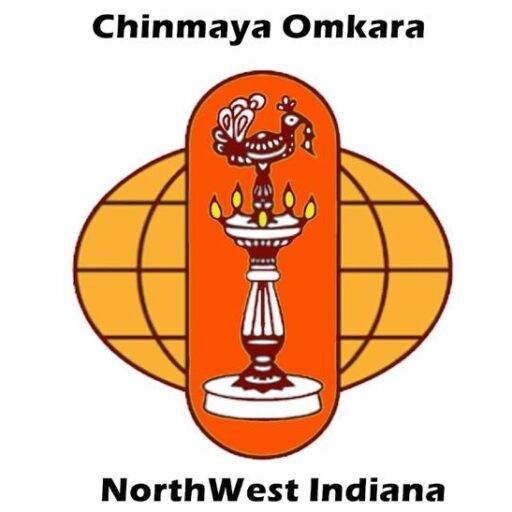Upanishad Course – Chapter 10
Week 19
All that we have ever experienced, in our inner and outer worlds is relative. It can be described as a dream or an illusion.
In Shrimad Bhagavad Gita, Bhagavan Krishna describes a person who can withstand all the pressure from one’s mind, Sodu, is free.
This message sounds dejective, however, we must understand that if there is a relative, there must be an absolute.
This absolute is of nature of inclusivity and includes each and every one of us. When we talk about renunciation, we are therefore not renouncing anything compared to what we are regaining.
In Shrimad Bhagavatam, when Bhagavan Brahmaa did not know he was, he practiced enquiry.
Bhagavan Narayana came to help him know his real nature.
Similarly, when Prince Arjuna did not know what to do in the battlefield, he practiced surrender (another form of enquiry).
Bhagavan Krishna came to his rescue as a Guru.
We are Bhagya that we have access to the Veda.
Veda is a map to realize who we are and what we are supposed to do.
Veda is sometimes described as Vakya (words of the creator). Some of these vakyas are Mahavakyas and they address our identity crisis.
Mahavakyas teach us that the individuality is actually Infinity.
How do we practice this “Asi”? (We know Tvam and Tat) By shifting from experience to foundation, from existing to existence, from ‘aware of’ to awareness, from joyous to joy.
If we find this practice difficult, it indicates that the focus and balance needs to be worked on.
The mantra we referred to was from Kaivalya Upanishad 1:16: That which is Infinite is the highest.
It is the highest purpose in one’s life. Infinity is all and is the final support of the multiverse.
If we take away energy from the multiverse, existence still remains. If we take away existence from the multiverse, nothing remains.
This is the subtlest of the subtle which means it cannot be known as an object because it is beyond our senses.
It is to be experienced as one’s nature that is perpetual. “Tat Tvam Eva”, “Tvam Eva Tat”.
This mantra helps us to switch from experience to foundation.
Lesson 10: The nature of Atma Brahma has been shared as Sat (existence).
The fuller nature of Atma and Brahma is Sat Chit Ananda. Sat can be felt even by a tamasic personality, whereas Chit can be felt only if one’s personality is more evolved, like a rajasic person.
To feel Ananda, one has to be of Sattvic personality. Sat Chit Ananda is not a property of Infinity, it is the nature of Infinity. A property can change whereas nature cannot.
Anger is a property and the proof for this is that we are able to sleep. If sleep were a nature of a person, they would never be able to sleep.
We are more than our vices. Another difference between a property and nature is that a property can be given to another entity but nature cannot be given or shared.
This is why Infinity is independent by nature.
The lighter etymology of ‘Brahman’ is Bharanat tvat (that which supports).
In Shrimad Bhagavatam, Bhagavan Narayana is symbolic for Existence, Awareness, Joy and from Him arose Bhagavan Brahmaa who is symbolic for relativity.
Relativity is supported by Existence, Awareness, Joy. Infinity supports all! The term ‘suuports’ indicates presence of duality.
The heavier etymology of ‘Brahman’ is Braha tamatvat (means ‘big’).
When seekers like Raja Dasharatha and Rani Kaushalya or Shri Vasudeva and Shri Devaki pray to Bhagavan Narayana to have a child like Him, Bhagavan responds saying that there is no one like Him.
He is all there is! Therefore, Bhagavan Narayana Himself has to manifest as Rama or Krishna. ‘Big’ is used as an adjective in normal parlance.
But in this context, Infinity is just Big! Because Infinity is disassociated. There is no end to that Big.
To help us further assimilate this teaching, Pujya Guruji has shared a mantra from Taitteriya Upanishad, 2nd valli, 1st Anuvaka, 1st mantra (2:1:1): “The one who knows Brahman, they gain Param”.
We can practice this by remembering that knowing Infinity/our real nature is “re-discovery” or “re-gaining” the knowledge.
Another practical implication of this is that now our karma should be to purify not to create because Infinity /Joy cannot be created. “That (Brahman) is now going to be recited upon”.
Here recited means reflected upon. The most prominent teaching in this mantra is “Satyam Jnanam Anantam Brahma”.
We have studied ‘Satyam’ during our study of Chandogya Upanishad.
The word ‘Jnanam’ is symbolic for Chit or awareness.
We have to remember that Jnanam Is only possible because of Chit.
Because of awareness only, can we know anything.
Jnana happens through ‘vrittis’ (thoughts or thinking).
The word ‘Anantam’ means that which has no limits. In our experience, there are three specific limits, Desha (space) , Kala (time) and vastu (matter).
Infinity is omnipresent (no limits of space, Sat), omniscient (no limits of time, Chit) and omnipotent (no limit of matter, Ananda).
The last line implies that we should be inward looking and inward identifying.
The one who knows this, they taste all of their desires being fulfilled.
They realize Brahman. They realize Ananda!
Any entity that is supported (by a support) and is small (not big) is an appearance.
If we feel supported by existence, and if we feel small that I am a body, that is an appearance.
An appearance and what it goes through, is not real. Renounce that!

